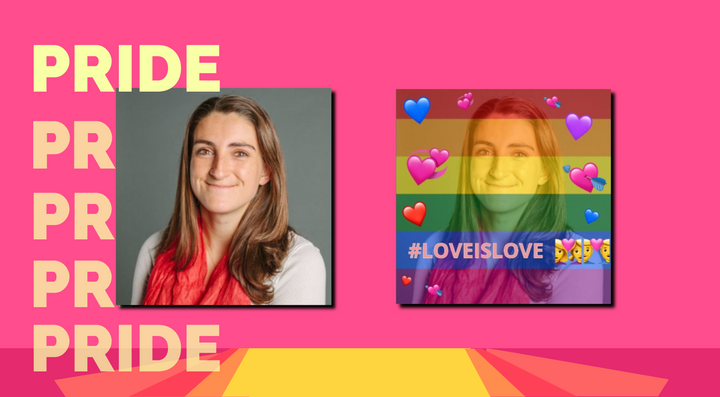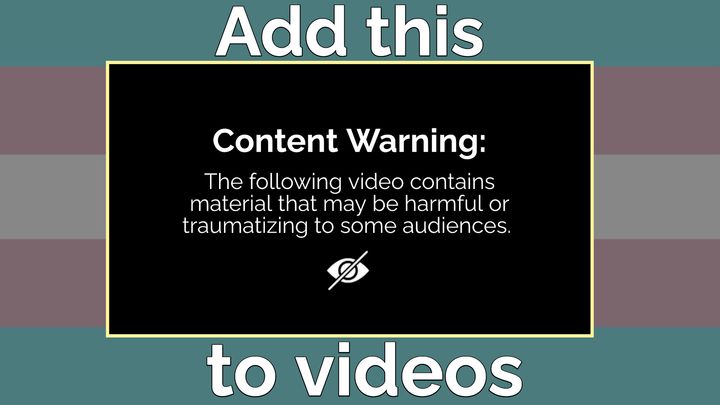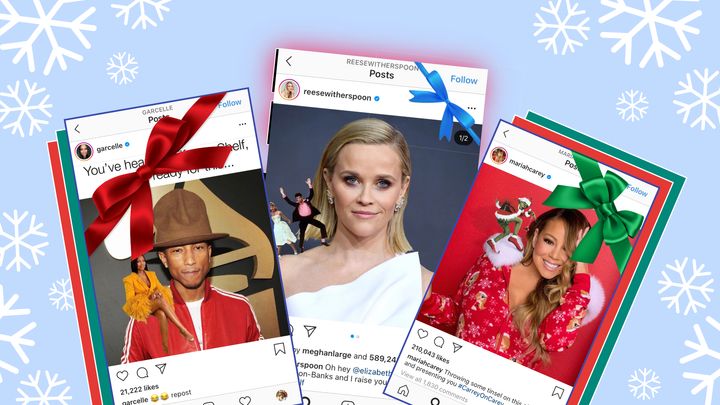User Generated Content Examples, Tips, and Tactics for Social Media
Discover the importance of user-generated content and see UGC examples to inspire your next UGC campaign.
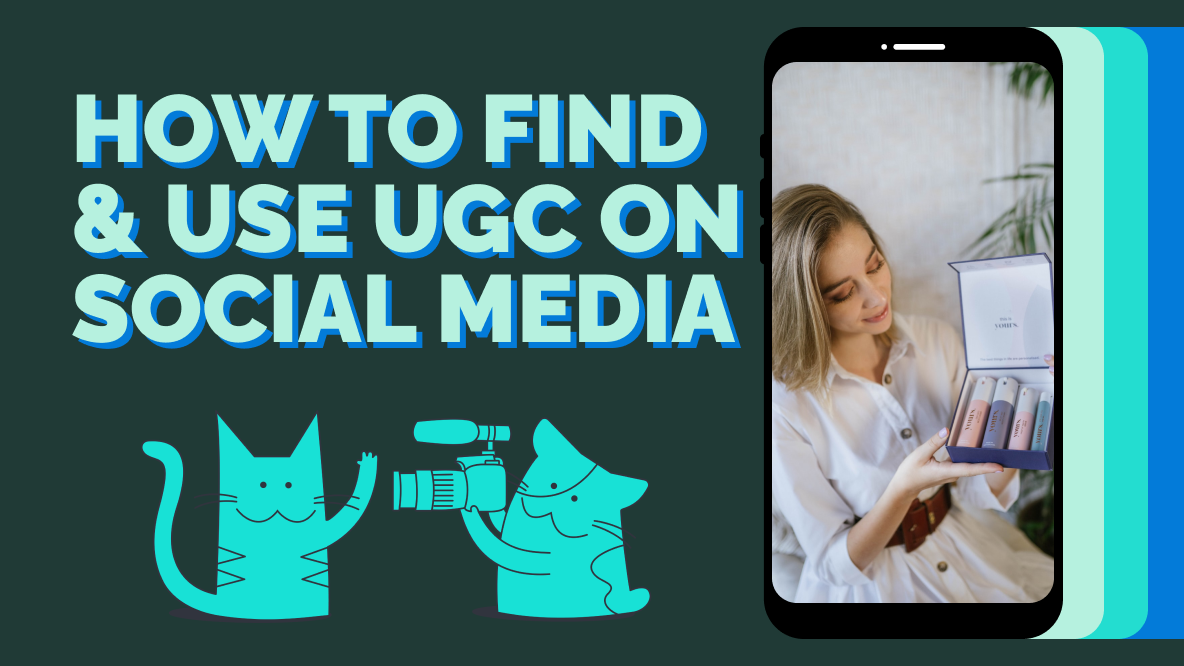
Your marketing strategy isn't just about the content you create on every social media platform. It's also about the content created organically by fans and customers of your business, aka “user-generated content.”
A UGC campaign can help you build more customer trust, showcase authenticity online, and even boost your sales.
New data shows that consumers are researching brands more thoroughly than ever when buying from a new business for the first time. And their method of research? Searching for UGC. Making user-generated content part of their customer journey is crucial for success.
There are six types of UGC you can add to your marketing efforts:
- Organic mentions/tags
- Written product reviews
- Social media product reviews (video or images)
- Tutorials
- Contest submissions
- Commissioned UGC
In this article, we'll share some user generated content examples from different brands for each of those categories. We’ll also cover different ways to source user-generated content so you can run your own UGC marketing campaigns.
Let’s get started.
Why is UGC important?
Before we jump into the UGC examples, what is user-generated content and why is it important?
User-generated content is any content that is created by fans, users, or customers or your brand rather than your brand’s marketing team. This includes written content (reviews, blog posts, Tweets, etc.), videos, and social media posts.
Why share user generated content instead of assets created in house? There are three main reasons:
1. UGC builds customer trust
People are more likely to trust reviews from other people rather than promotional branded content like advertisements. About 92% of people trust reviews from their peers. When people are actively promoting a brand's products on social media channels or via their personal website, they're likely to be viewed as a trustworthy source, especially if they're a niche expert in the topic.
UGC content helps build trust and acts as social proof that other people online actively support and purchase from this brand that you might be considering buying from.
2. UGC boosts brand authenticity
People are 2.4x more likely to say that UGC content is more authentic than content created by brands. When people find content to be authentic it tends to resonate with them. It helps build more customer trust as people often look to their peers for the latest products, trends, and companies to support.
3. UGC lifts conversion rates
Nearly 80% of people say UGC content helps them with their purchase decisions. As long as your product is generally viewed positively due to its quality, reputation, and emotional impact on others, UGC can be a great way to lift conversion rates. On average, people will read between 4-7 UGC reviews online before making a decision. Social proof via UGC can be an effective way to grow your business' overall sales.
And that’s not just true for online shopping. ROBO (research online, buy offline) is still an important part of consumer behavior and accounts for a significant portion of user-generated content ROI. According to The Bazaar Voice, the average ROBO multiplier is 3.91x, or $3.91 of in-store revenue estimated for every $1 of online sales attributed to UGC.
In fact, the UGC strategy is so effective that the new viral shopping app Flip built their entire business model around it.
UGC examples from brands for each type of UGC
Let's take a look at some UGC content examples from different brands' UGC campaigns.
Organic mentions/tags: Gymshark
Gymshark is an athletic wear brand that takes UGC to a whole new level. Their social media pages are filled with content from Gymshark “ambassadors,” aka fitness influencers who make their products look good.
To be featured, the creator tags or mentions Gymshark in content where they’re wearing or showing a Gymshark product. Some of these brand ambassadors may go on to develop deeper relationships with the brand, collaborating on product launches or attending live events.
Why this UGC example works
This kind of UGC campaign creates a mutually beneficial relationship between the brand and the creators/users.
The creator’s content gets more views when it’s put in front of a new audience (Gymshark’s audience in this case) and they might even gain new followers. And the brand gets a posting calendar full of curated, ready to post content they didn’t have to create that expands their target audience beyond their existing reach.
Written product reviews: Colourpop
Featuring written reviews on your product pages or website is nothing new and is generally considered a great way to share social proof. But throwing up a screenshot of an Amazon or Google review on Instagram doesn’t hit the same. Unless you’re creative about it.
Colourpop Cosmetics created a collage of positive reviews from customers over the years as the intro to their birthday post, celebrating 10 years.
Why this UGC example works
If Colourpop had just posted the collage of review screenshots, this post would likely have flopped. Posting five star reviews outside of the context of a product landing page tends to have that effect. But as the lead in to a heartfelt video about how grateful they are that they get to make such fun, special makeup for people who love to wear it – it works.
The intro has movement, bright colors, and a voiceover that starts right away to keep the audience’s eyes and ears engaged from the beginning.
Social media product reviews: Oura Ring
Oura Ring knows that their product claims are lofty, which is why they let their satisfied customers do the talking. Their TikTok account is full of genuine, organic reviews from users sharing their experiences.
@ouraring We couldn’t agree more @Alexis Hawes | Holistic Health! 💍📈✨ #health #wellness #recs #review ♬ original sound - ouraring
Why this UGC example works
We know that people trust reviews from other people, especially when those other people are just regular people like them, not celebrities or influencers being paid to endorse a product.
This is even more important when you have a product or service that seems “too good to be true.” Oura Ring’s product makes a lot of claims and having their users back up those claims and explain how the product works in simple, everyday language helps potential customers feel more confident in their decision to purchase or not.
Tutorials: ClipStudio Paint
SaaS brands, this one’s for you.
Digital art software brand ClipStudio Paint knows how to best showcase their tools and brushes: by crowdsourcing tutorials from their existing user base. There are plenty of talented artists using ClipStudio and teaching their own viewers tips and tricks.
In this example, ClipStudio user @lplucas shares how to use a lesser known feature to edit a project’s layers. It’s an entertaining and educational video that helps existing users better understand the software so they can use it to its full potential while enticing potential users to try out CSP.
ClipStudio also features a lot of artwork made with their software to inspire old and new users alike.
Why this UGC example works
If you have a product that needs to be shown in action, tutorial content is king. And while you can make tutorials in house, the people who know your product best are often the ones who use it every day (aka, your customers).
Additionally, educational content is valuable but incredibly time consuming to create. By featuring tutorials from the talented artists in their user community, ClipStudio can give that value to their users without spending a lot of in house resources.
Contest submissions: Shopify
Contests are one of the oldest engagement tricks in the social media playbook, but they can also be a great way to source user-generated content (more on the how of that in a moment).
You can, of course, simply ask for submissions of ready-to-post UGC. Or you can take the approach Shopify did, and create a video using a combination of user-generated assets, collaborative storytelling, and in-house editing.
Shopify recently ran this contest to feature one of their users in a MrBeast video. Once the contest wrapped and the MrBeast video went live, Shopify created their own mini case study video to share with fans and followers about the experience.
Why this UGC example works
This campaign allowed Shopify to give back to their users (instilling loyalty and trust) and also court the business of new entrepreneurs seeing the success story of Kanga Coolers, the featured winner.
It’s also a lesson in creative repurposing. Rather than just one-to-one reposting a UGC content asset, Shopify expanded on the user-generated idea to create a better piece of content.
How to find UGC
Now that you have some solid user generated content examples to reference, let’s talk about ways to actually find user-generated content to use in your own campaigns.
1. Find users talking about you
You can find people organically talking about your brand online on their social media accounts, blogs, podcasts, and more. The bigger your brand becomes, the more people will talk about you. Searching for your brand or product name on a social media site is a great way to source organically created user generated content.
Whiteclaw frequently incorporates UGC, specifically tweets, into their content strategy. Sharing users organically and authentically praising your product online is a fast track to engagement and that sweet, sweet social proof.
Not finding a ton of people talking about you online? Give them some incentive.
To get people talking about you organically, you might run a large user-generated content campaign. For example, years ago when Coca Cola ran the #ShareaCoke campaign they replaced their logo with people's names.
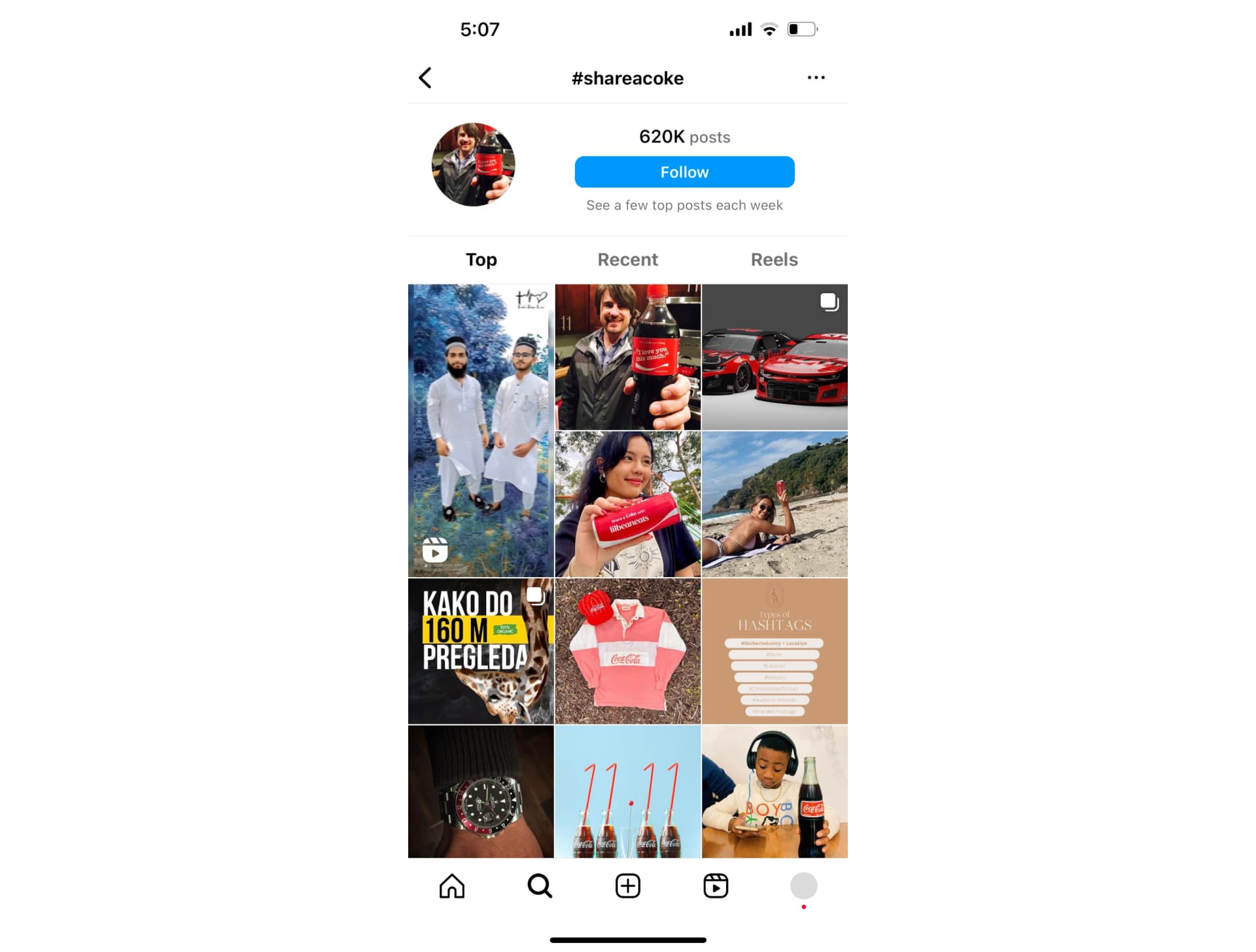
As a result, people were sharing a Coke with their friends, family members, and coworkers when they found a bottle with the name of someone they knew. People were also taking pictures of the campaign and posted them on social media. It made for great word of mouth marketing but also gave Coca Cola plenty of UGC to choose from to reshare on their own social media campaigns and channels.
2. Create a hashtag for people to use
Take the previous example one step further by coming up with a branded hashtag for people to use when sharing about your brand or product online. List the branded hashtag in your Instagram bio to make it easy to find and encourage people to start posting user-generated content for you. The best branded hashtag will typically be your brand name, so you can take the guesswork out for people when they create content around your brand.
For example, if you own a clothing store, people will typically wear your products when they're out and about, going to a special event, or taking selfies. So, when they go to post their picture on Instagram or TikTok, they'll usually add branded hashtags on the post to create more visibility, so they can get more engagement. If they know their outfit is from your store, they'll use your branded hashtag. This is essentially fitness brand Gymshark’s entire social media strategy.
Alternatively, if you're running a short-term user-generated content campaign, you can create a custom hashtag to help build up the popularity of a new hashtag. Take Apple’s #ShotOniPhone campaign, a counter move to Samsung’s heavy emphasis on their phones’ camera quality. This hashtag now has nearly 28M posts, showcasing the stunning image and video quality iPhone cameras can produce. That’s pretty good marketing.
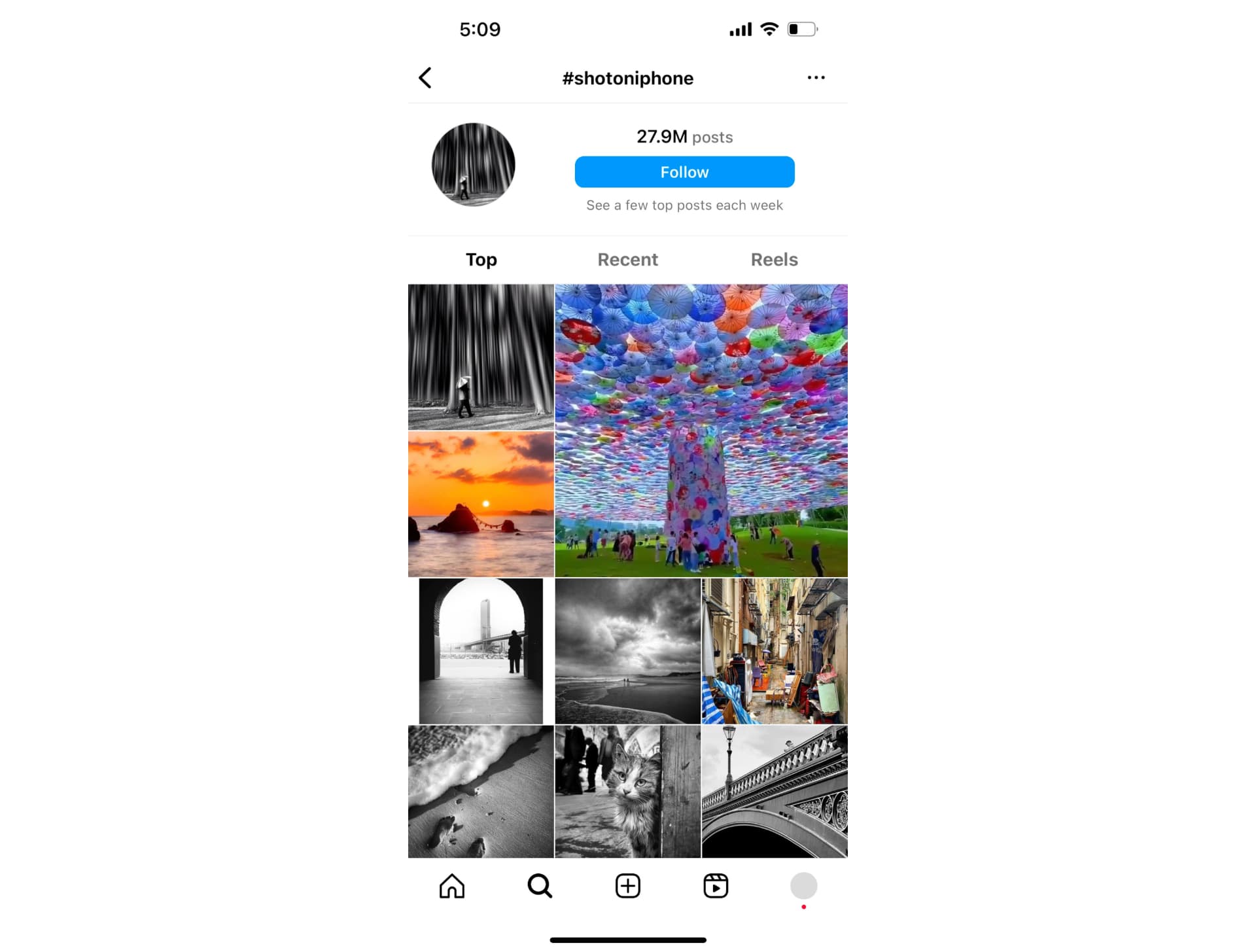
A branded hashtag is also very easy to search through. So, if people are considering going to your restaurant, shopping at your store, or buying from your company, they'll look through your branded hashtag to see what people are saying about you, better understand your product, and build anticipation for trying you out themselves.
3. Ask people to tag you in photos
If you'd like to build more user-generated content specifically to publish on your own channels, you can ask people to tag you in their content. While tagging you won't make the content show up for other users, it will give you a pool of posts to pick from to sprinkle into your content calendar. Bonus: it can help boost your page’s followers, too.
Dynamite tells users right in their bio to tag and use their branded hashtag.
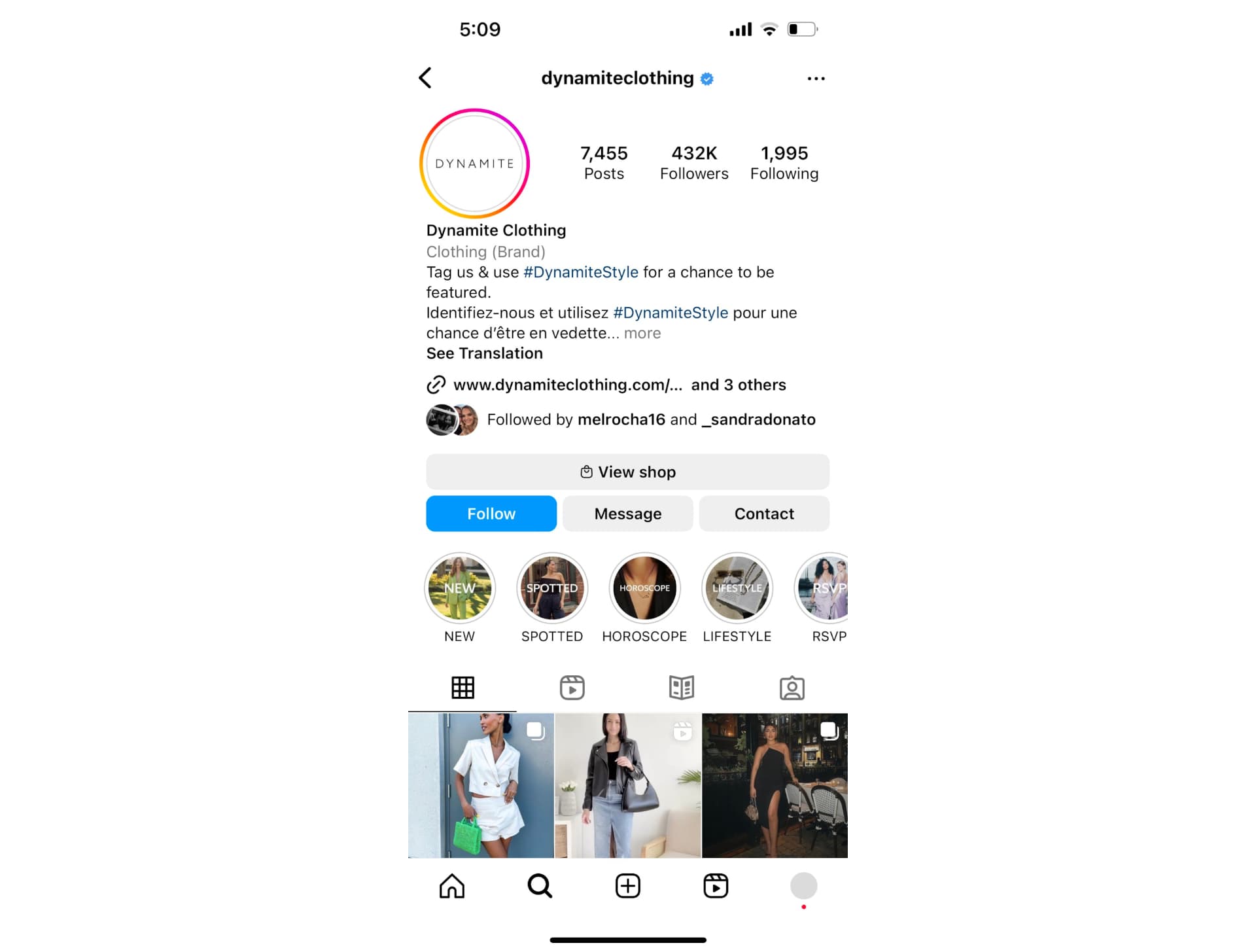
When people tag businesses in the user-generated content they create, their followers will see that content and end up following you too if the content piques their interest. If your goal is to get more followers from the user-generated content people create, then asking for people to tag you in photos in your Instagram bio might be the best option for you.
If you’re going to post the UGC to your own page, make sure that’s stated upfront or get permission directly. You can do this with a simple “Tag us to be featured” in your bio or post description.
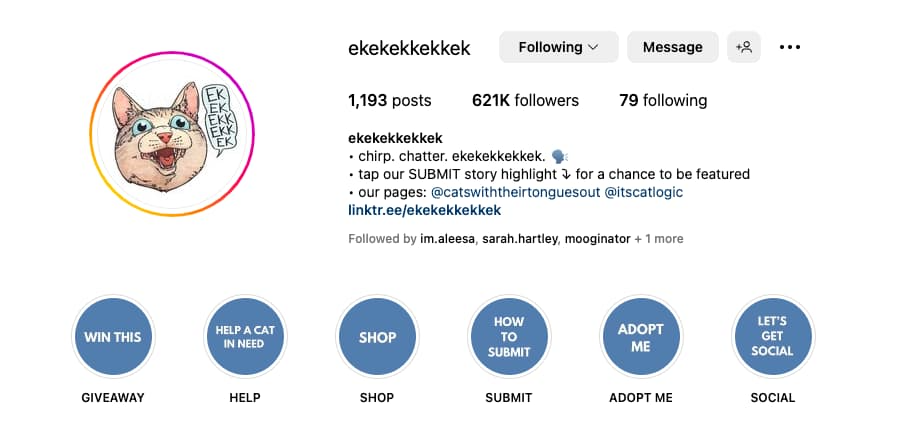
This account on Instagram, all about that funny chirping/chittering thing cats do when they see a bird or rodent, makes it clear how to submit your UGC to be featured on their page.
4. Ask for reviews
When someone purchases from your business, you can send them an email asking them to share reviews, photos, and videos of their product on your website or on social media. Reviews are a form of social proof that helps build enough trust to compel someone to buy your product. When they read another person's review, they get a better sense of what they can expect when buying your product.
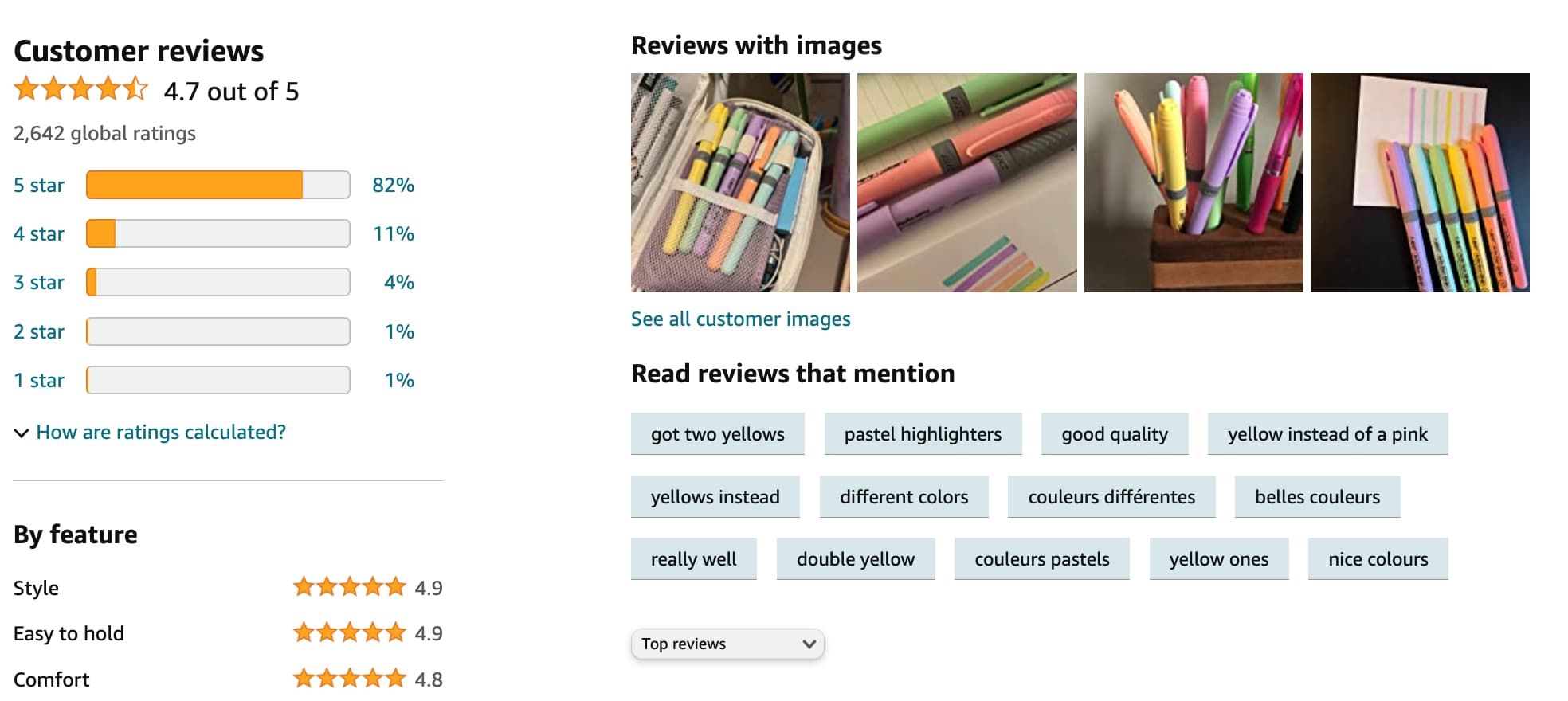
Product videos and pictures are some of the best forms of reviews imaginable because it helps people see beyond a photoshopped product image to help them in their buying decision. Negative reviews can also help people buy the right version of the product. For example, if a review says an item runs small, a potential customer might buy a larger version of the same product, saving them the hassle of a return and you the cost of a refund.
Whether it's positive or negative, you want people speaking about your brand as honestly as possible and sharing as much user-generated content as they can to help you generate more sales for your business. You can feature these reviews in your organic social media content or even in promotional materials.
5. Create a UGC campaign contest
If you want to see a rise in user-generated content, you can create a UGC campaign via a giveaway or contest. A successful UGC campaign will be one that people actively take part in. For the most participation, it should be fun and easy for people to share content with you.
You can share the contest details via social media, promote it to your email list, or even announce it on your website or the purchase page. The key here is to get responses from existing users or customers, preferably those who have some brand loyalty and are satisfied with your product or service.
If you sell a physical product, you can ask people to share photos and videos of their product in creative ways. For example, if you sell beauty products, you might ask people to create a wedding makeup routine with your product or an everyday makeup look for an average day. If you sell a digital product, such as an ebook, you might ask people to read their favorite quote or page from your ebook.
In addition to featuring the winning user generated content campaigns on your page, having a good prize is key to getting quality user-generated content. The amount of effort that goes into creating content takes up people’s time, their most limited resource. So, offering a prize pack, cash prize, or even a luxurious item like a vacation getaway can all be great ways to entice people into doing more user-generated content marketing for your brand.
6. Share samples with potential customers
One way to unleash more user-generated content is to actively share samples with people. If you own a physical product, when you do your sales outreach, offer your product as a sample to local businesses who could carry it, influencers, or relevant people who might end up enjoying the product.
By exposing your product to more people for free, people will naturally start creating user-generated content for it. For example, if you own a sauce brand, giving away your sauce to different people might result in people sharing recipes with your sauce in their food content if they're a chef or on their store shelves if they own a brick and mortar store.
Ultimately, the way to get more user-generated content is to bring more awareness to what it is you're selling. Samples and freebies are a great way to help people discover your product, so that they continue to buy your stuff but also actively share it with others. So, never forget to offer freebies and samples as part of your marketing strategy.
7. Actively share UGC online
Your social media platforms and website are great places to share all the UGC your brand gets. People love being recognized and acknowledged. So, when brands engage with people's user-generated content by commenting, liking, and re-posting their customer photos, videos, Instagram Stories, and posts, people tend to share more social media posts about them.
Woods Coffee encourages social media users to tag them in posts using #WoodsCoffee and #PNWoods. Their feed is full of images and Reels from customers in their community who love their coffee and cute shops.
You'll see more content created about your brand when you acknowledge the content people create about you. As your brand grows bigger, you'll likely re-post fewer user-generated content from your followers and customers, but you should still engage with them as it'll keep the organic promotion of your brand strong.
8. Find UGC creators online or through an agency
There are countless UGC creators out there that you can pay to create content for your brand. You can hire UGC creators directly or through an agency online to find people who specialize in creating photo and video around the type of product you sell.
Note: While they both operate off the same basic principle of social proof, paid UGC and influencer marketing are very different. With influencer marketing, you’re paying for the social influence of an individual in an attempt to reach their target audience, which is typically highly engaged and more likely to purchase from them. The influencer talks about your product on their own social channels, disclosing it as a #Ad or #SponsoredContent. Depending on the number of followers and level of influence, the cost can range from $50 to millions of dollars for a single post.
Paid UGC doesn’t work like that. The UGC creator doesn’t post to their own channel at all, because many UGC creators don’t have a very large following on their personal accounts. This is intentional. You’re not paying for their individual social influence. Instead, you’re purchasing the appearance of an organic review, product unboxing, or testimonial that you can publish on your branded channels. And because the barrier to entry is much lower to be a UGC creator, so is the price point to purchase paid UGC.
An example of what UGC content creation looks like and how it's different from influencer content creation:
@ugcworkshop Watch me film $1050 worth of UGC content in one day :)) You absolutely do not need to do this much in one day in fact I recommend giving yourseld 1-2 weeks to deliver this much content. The purpose of this video is to reach an audience who is interested in UGC and show just how capable you can be of achieving your goals :) #ugccreator #ugccommunity #usergeneratedcontent #ugcworkshop ♬ Write This Down - Instrumental - SoulChef
Why would you pay for UGC when we just explained all the different ways to source it organically? There are a few reasons.
If you’re looking to outsource photography and videography services but don’t want to pay an agency, it’s often easier to find quality visual content through a UGC creator than by sifting through organic reviews and photos of your product. If your brand is new and you don’t have any users talking about you online yet, you won’t be able to source any organic UGC. You can still get that critical social proof by sending your product to a UGC creator to film or photograph.
Finally, if you want to use UGC in an ad campaign, it’s much easier to get legally watertight permission if you paid for the UGC outright. Republishing someone’s Instagram post to your page is usually fine with their permission, but taking that same post and putting it in an ad carousel could land you in hot water. It’s better to buy your ad materials, not borrow.
Plan your next successful UGC campaign
Now that you've learned the importance of having user-generated content and how to attract more of it, it's time to start planning UGC campaigns of your own. Creating a branded hashtag, emailing your current and past customers, or running a contest can all be effective ways to encourage more user-generated content from your audience. Actively promote and acknowledge the content people create for your brand to build rapport and increase brand loyalty.
If you're looking for a video ad maker for your own campaigns, consider signing up for Kapwing to create more videos for your social media platforms, faster.
User Generated Content FAQ
1. What does UGC stand for?
UGC stands for user-generated content. It refers to any content about a brand or product that was created by consumers rather than the brand themselves. Often, this type of content is sourced organically and republished to a brand’s social media channels to serve as social proof and outsource some aspects of content creation. UGC can include social media posts, reviews, videos, blog posts, podcasts, images, or other forms of consumer generated content.
2. What is UGC on TikTok?
Technically, UGC on TikTok is any video created by a person with a TikTok account about a brand or product that isn't directly affiliated with that brand. However, when people talk about UGC on TikTok they’re often referring to the large community of UGC creators who are paid to create seemingly organic content for brands. These creators post videos under the hashtag #UGC, discussing how to get started making money by making UGC, how and where to find brands that are looking for UGC, how to put together a UGC portfolio, and other similar topics.
You may have also noticed that many of the ads on TikTok are UGC. The video will appear to be another organic video on your FYP, just an average person talking about a product, but if you look at the username, it’s an ad from the brand themselves. This type of content is often paid UGC.
3. What does a UGC creator do?
A UGC creator is someone who is paid to create content about brands while making the post look organic and authentic. This is a relatively new concept and has arisen as an alternative to influencer marketing for individuals who still want to make money on TikTok or Instagram but aren’t interested in building up a huge following.
Create content faster with Kapwing's online video editor →
